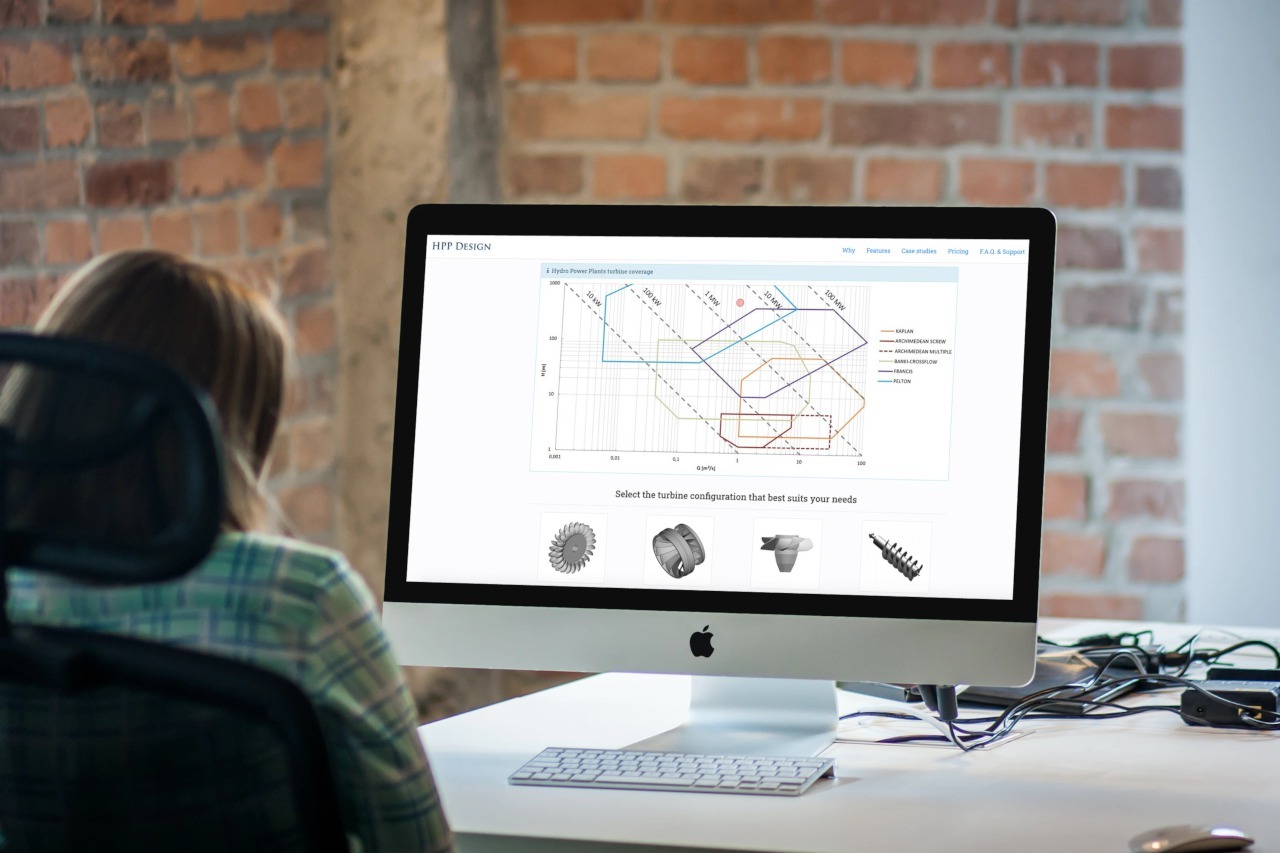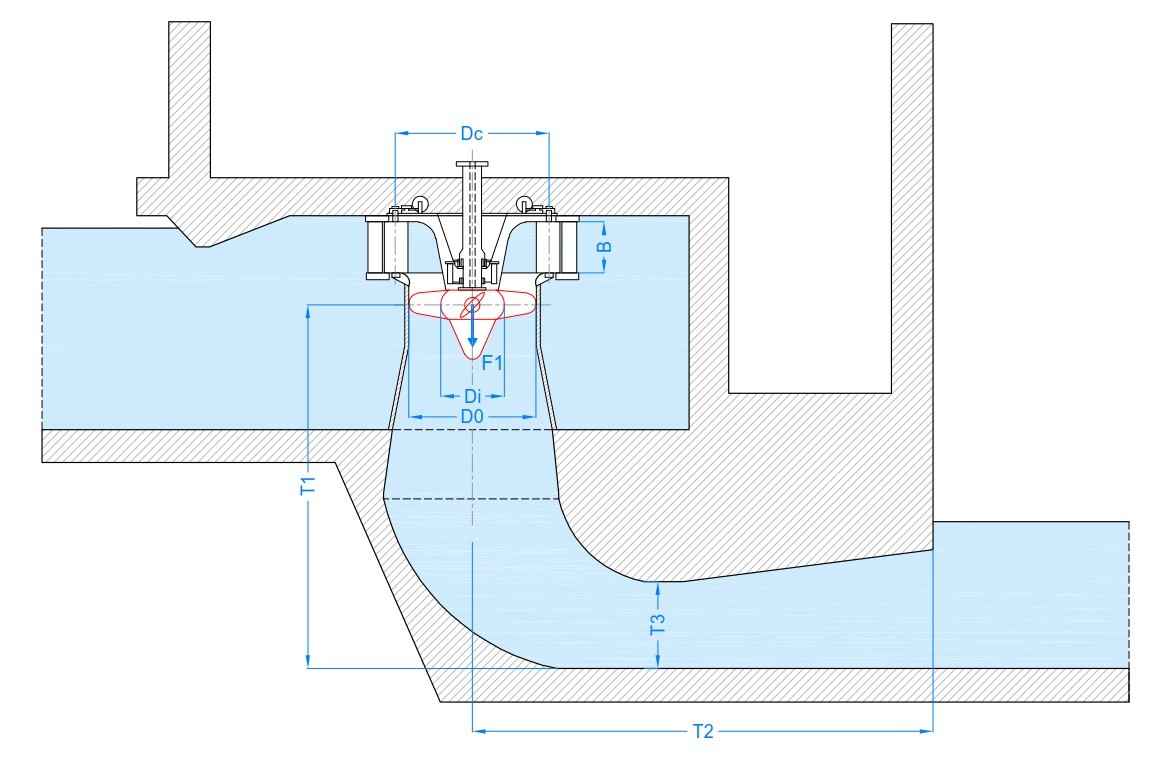A new way to - design
- size
- fit
- assess
your Hydropower Plant
Hpp-design is the first step to find the main parameters for your Hydropower Plant. Try It Now!
Hpp-design is the first step to find
the main parameters for your Hydropower plant
One of the main questions for hydropower project developers is:
Which turbine is the best choice for a HPP?
Should it be a Francis, a Pelton, a Kaplan, an Archimedes screw, a Cross flow, or a PAT (pump as turbine)?
What are the fundamental dimensions of a hydro turbine, its weight, its efficiency?
HPP-design is the answer to these questions.
HPP Design features
New sizing
HPP-design is an automated tool to provide all the information you need for the preliminary design of an Hydro Power Plant.
It’s a very useful tool if you want to understand size, performance and specifications of hydroelectric turbines such as Pelton, Francis, Kaplan, Archimedes screw, Cross Flow (coming soon) or PAT (coming soon).


Select the best configuration
Providing the hydraulic head (H) and the nominal expected flow rate of the plant (Q), HPP design is able to find a range of suitable turbines and to address the user to the best solution according to the specific framework of the plant.
On the preliminary design stage is possible to:
- find out the dimension of the turbine(s) in order to size the powerhouse
- determine the nominal electric power and the expected efficiency of the plant
- estimate the partial load efficiency of the turbine
- asses the energy yield of the plant for a given flow rate duration curve of the river
HPP-design can also be used as a testing tool, for example to see if the size of the powerhouse is correct or to evaluate a revamping or repowering of the plant. Or if the assumed efficiency curve suits the turbine you chose. Also, you can find the mechanical specification to verify your project.
Turbine mechanical data
HPP-design has a simple and very intuitive interface, created to help those working in the world of hydropower to start from the core: the turbine.
Once the net head (H), water flow rate (Q) and grid frequency (f - 50Hz for Europe, look here for more information) are assigned, a list of available turbines is presentes, grouped by family of machines and sorted by the specific speed. Each specific speed corresponds to a different turbine-generator pair and thus to different dimensions of the electromechanical equipment and different efficiencies at both nominal- and partial-loads.
You can even try various hypotheses of turbine for the same installation, to determine which is the most appropriate range of operation to maximize production, and determine dimensions and costs. All sizes will be saved online and and can be accessed from any platform, at any time.
Despite all those options, the user can simply select the “suggested solution” to achieve the highest turbine efficiency or navigate across each specific solution.


Turbine efficiency and energy yield
We know that the best key index to evaluate the design of a hydro power plant is the trade-off between costs and energy yield. That’s why HPP-design provides the main parameters to evaluate the construction expenditure, a list of suppliers for enquiries and a powerful tool to assess the expected energy production for a given flow duration curve.
That’s it! The tool now provides all the information you need for the preliminary design of the plant and the construction of a business plan.